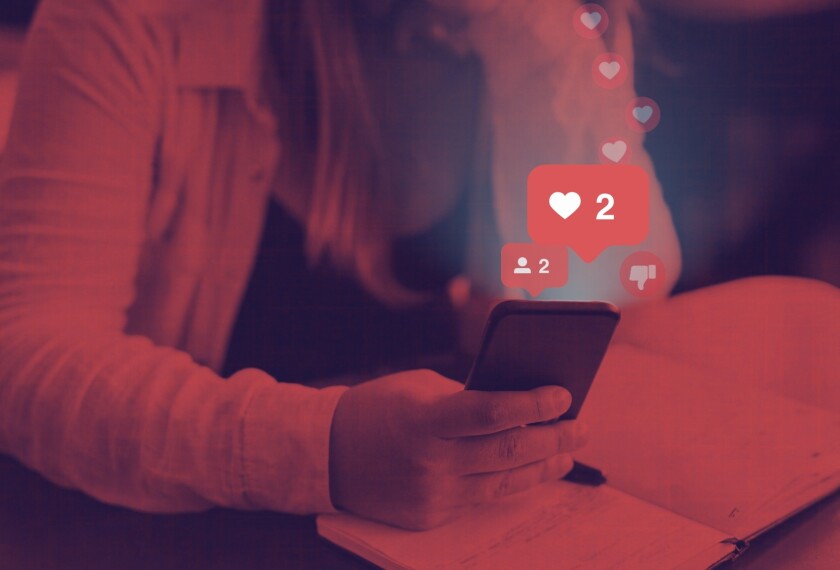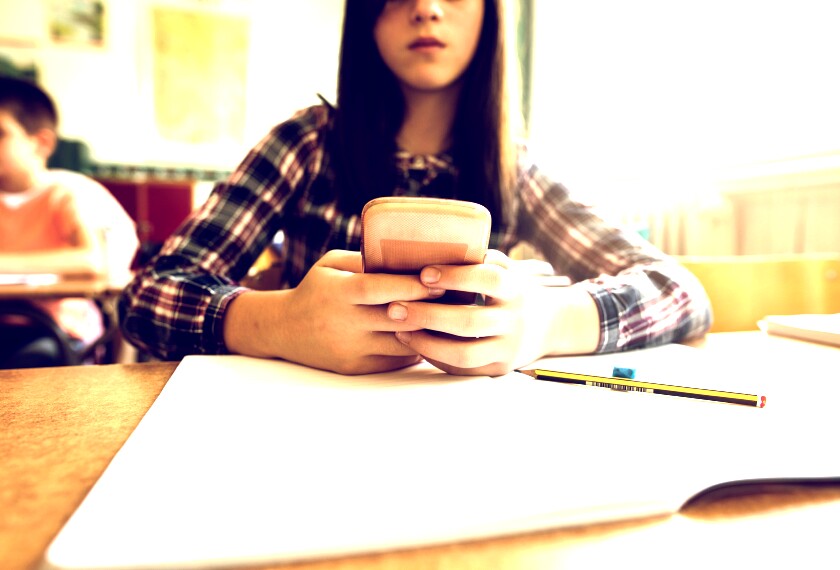The nation’s second largest school district has had enough of cellphones. The Los Angeles Unified School District board of education voted on Tuesday to ban students from using smartphones—a move that will take the devices out of the hands of tens of thousands of students during the school day.
The news comes as , and the U.S. surgeon general has called on Congress to require a warning label on social media, similar to what appears on tobacco and alcohol products.
While the movement to restrict cellphones in classrooms has been gaining steam in both districts and statehouses, Los Angeles Unified, with 429,000 students who comprise one of most ethnically, racially, and linguistically diverse school systems, becomes the largest district to adopt a full-fledged ban on phones during the school day in an effort to improve students’ learning and well-being.
“When coupled with social media, phones are a harmful vehicle that negatively impacts young people,” said Alberto Carvalho, the superintendent of LAUSD, in a statement.
The resolution passed by the school board requires the district to implement the policy by January 2025. The exact details of the ban are yet to be determined by the district.
The ban will cover the entire school day. District leaders see the devices as having a corrosive effect on more than just students’ learning.
“When I visit campuses during lunchtime, my heart breaks to see students sitting alone, isolated on their phones instead of engaging and learning with their peers,” said board member Tanya Ortiz Franklin in a statement. The resolution, she said, “marks a significant step towards fostering a culture of face-to-face interactions and building a stronger, more connected, and positive school community.”
Cellphones have emerged as among the most animating issues in K-12 education as schools struggle to find their footing as personal devices have proliferated.
About half of U.S. children get their first cellphone by age 11, and around 9-in-10 teenagers have their own cellphone, according to , a nonprofit that focuses on the impacts of technology on young people.
Many educators believe that cellphones, and the near constant access they provide to social media and messaging services, are a major—if not the driving—force behind students’ academic, behavioral, and mental health problems. However, research on the issue is still emerging and decidedly mixed.
A nationally representative survey of educators last fall by the EdWeek Research Center found that teachers were more likely to support cellphone bans than principals and district leaders. Twenty-four percent of teachers said that cellphones should be banned on campus compared with 21 percent of principals and 14 percent of district leaders.
Nine percent of teachers, principals, and district leaders said that cellphones were banned on high school campuses.
California is among several states considering school cellphone restrictions
There are a lot of nuances education leaders should be aware of when crafting cellphone policies, said Merve Lapus, the vice president of education outreach and engagement at Common Sense Media.
For example, students in schools with aging devices may be relying on their personal cellphones to access important educational tools, Lapus said, and all-out bans can raise tricky issues around equity.
“I think it’s being able to recognize what are the needs of your community and what are you really able to really provide, those are fundamental questions that should be asked before just throwing the ban down,” he said. “I think it’s coming from a good place, we want our kids to focus and really be fully present in the learning experience, not just for the academic needs but for the social importance. But there are some things that need to be considered.”
While cellphone bans will eliminate distractions while students are in school—research by Common Sense Media has found that teens receive a median of 273 notifications on their phones a day—it’s not going to solve all problems, Lapus said.
“Just cutting off the phones doesn’t really change what kids are going to go through when they are back at home—it just delays it for a bit,” he said. “If we want to really make changes, we need to look at legislation that holds these platforms more accountable.”
69´«Ă˝ also need to continue to teach students healthy tech habits to help them manage their cellphone and social media use, even if they no longer have access to their devices during school hours, Lapus said.
If California were to pass some statewide restrictions on cellphones in schools, which Gov. Gavin Newsom has called for, it would join a small but growing number of states to do so.
Florida became the first state to ban cellphones last year in classrooms, and Indiana followed suit in April. Ohio passed a law in May that doesn’t outright ban cellphones but does require districts in the state to create cellphone policies that will minimize students’ use of the devices. As many as eight other state legislatures have considered bills this past spring that would have prohibited students from using cellphones in class.
Utah’s governor has also expressed support for a school cellphone ban in his state.
Even though cellphones have become a major headache for educators, there are still educators who are hesitant to embrace outright bans, especially at the state level.
One prominent argument is that students must learn to manage their devices and the distractions they cause so they’re prepared for college and work. Others—in particular district leaders—would prefer the decision to ban cellphones be left to schools.
In a statement to the Associated Press, the California School Boards Association said that these decisions should be made at the local level, reflecting individual community concerns.
Explore our coverage around students’ use of cellphones in schools:
> Guide to setting a policy: Here’s a decisionmaking tool for educators to map out the different potential outcomes when putting cellphone policies in play.
> Cellphone bans and restrictions: See which states are requiring cellphone restrictions or bans in schools in our tracker. Explore our tracker.
> Nuisance or teaching tool? How teachers are turning an ubiquitous and growing class nuisance—the smartphone—into a tool for learning.
> Cellphone policies, explained: Education Week breaks down the different ways schools are addressing cellphone use, and the factors to weigh before adopting or changing the rules. Check out our explainer.
> Tips from teens & teachers: Teenagers offer 6 tips on how schools should manage students’ cellphone use, and educators share their tips on policing cellphone use in classrooms.
> Then & now: How the “sexting” panic previewed today’s debate about kids’ cellphone use.









